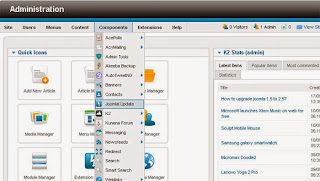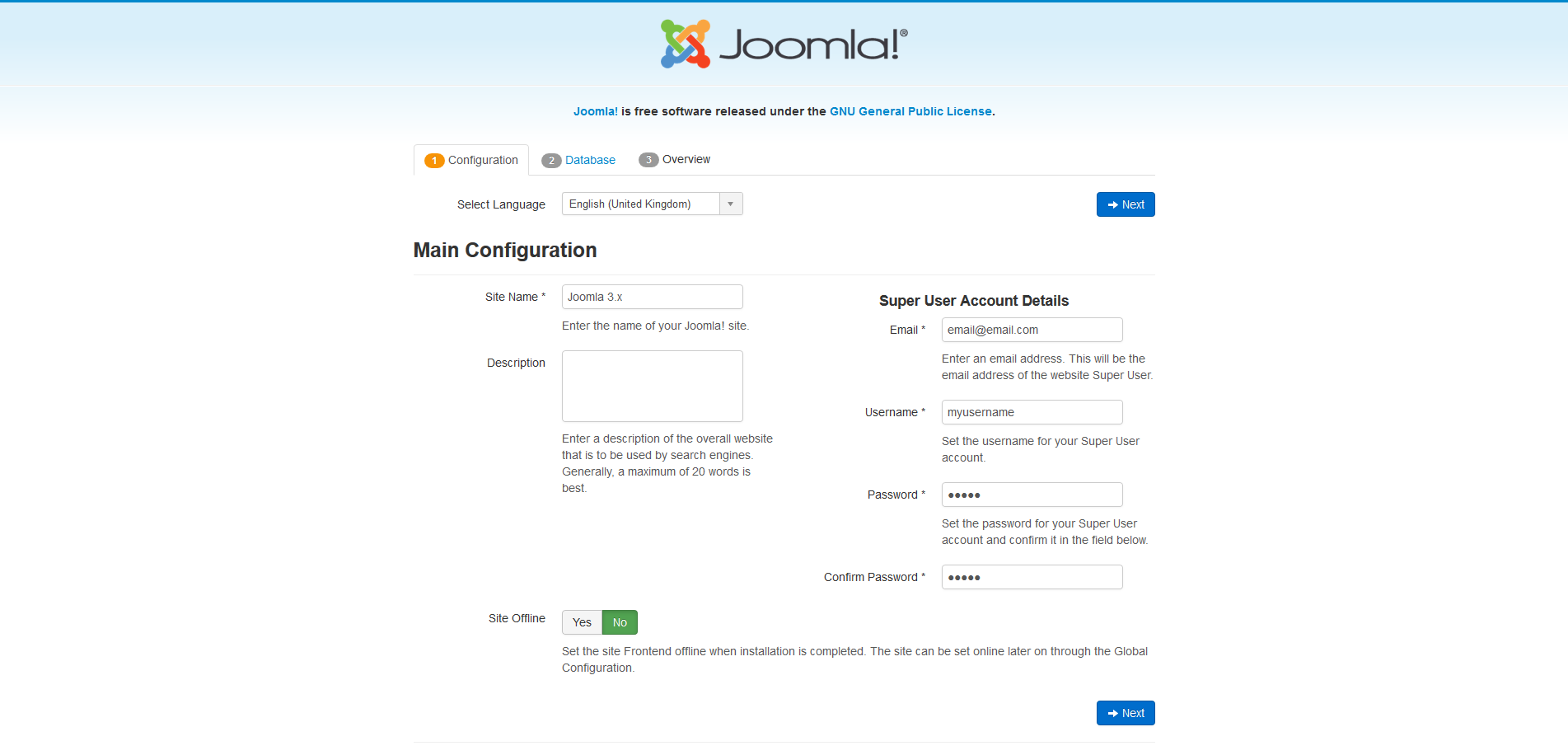Joomla's tagging system is used in all core content extensions and is designed to be be easy to integrate into other extensions that use standard Joomla design patterns.
Using tags in an extension is relatively straightforward but it requires small changes in a number of specific places.
Create a content type for each view
Note: Types can be added using either sql or postflight by creating a JTableContenttype instance and adding a row.
First identify which tables contain data that will be tagged and what the name of the single item view displaying each of these tables. For example:
- #__contact_details is the table displayed in the view contact of component com_contact with table class ContactTableContact.
- #__weblinks is the table displayed in the view weblink of com_weblinks so WeblinksTableWeblink.
CREATE TABLE IF NOT EXISTS `#__content_types` (
`type_id` int(10) UNSIGNED NOT NULL AUTO_INCREMENT,
`type_title` varchar(255) NOT NULL DEFAULT '',
`type_alias` varchar(255) NOT NULL DEFAULT '',
`table` varchar(255) NOT NULL DEFAULT '',
`rules` text NOT NULL,
`field_mappings` text NOT NULL,
`router` varchar(255) NOT NULL DEFAULT '',
For each table/option/view you will need to make an entry in #__content_types. You can do this either using sql or postflight by creating an instance of JTableContenttype. Don't forget a category type if you use the Joomla categories API.
A string giving component.view (that would be in the page request, typically matching the model name) goes in the **type_alias** field.
table gives the complete table class information for the table class stored as a JSON object in which the first element represents your "special" table and the second an optional common table (otherwise it will default the JTableCorecontent. This includes the name of the database table, the name of the primary key, the prefix, the name, an option array as used in your constructor and getInstance() methods. This enables the tagging system (and other APIs) to access your table easily.
If you are using Joomla categories make sure to create a category type so that they can be tagged. In Joomla 3.1 and 3.1.1 there is an error where the tag field will show even if there is not a type, but this is corrected in 3.1.4.
Important note : Please note that the table name for the common table is #__ucm_content. This is INCORRECT in 3.1 and 3.1.1 data but is not currently used. The data was updated in 3.1.4.
{"special":{"dbtable":"#__content","key":"id","type":"Content","prefix":"JTable","config":"array()"},"common":{"dbtable":"#__ucm_content","key":"ucm_id","type":"Corecontent","prefix":"JTable","config":"array()"}}
The type_title field would potentially be used for display although this is not implemented currently except in the contentttype field. Usually it should begin with an upper case letter if it is in English. See note about how to make this translatable.
note:
To make your type names translatable add
COM_TAGS_CONTENT_TYPE_ + the type_title
in both the ini and sys.ini files.
Rules is currently not used. It will likely be removed in favor of an asset_id for each type, but currently you can ignore this field which will be managed by JTable.
field_mappings maps the names of specific fields in your table to a set of standard names. This mapping is stored as a JSON array with the first element mapping to the common fields and the second one mapping the other fields from the table.
Important note The JHelperTags and JUcm APIS at 3.1.1 supported arrays for this field, but as of 3.1.4 either arrays or objects with a default of objects are supported.
'{"common":[{"core_content_item_id":"id","core_title":"title","core_state":"published","core_alias":"alias","core_created_time":"created_time","core_modified_time":"modified_time","core_body":"description", "core_hits":"hits","core_publish_up":"null","core_publish_down":"null","core_access":"access", "core_params":"params", "core_featured":"null", "core_metadata":"metadata", "core_language":"language", "core_images":"null", "core_urls":"null", "core_version":"version", "core_ordering":"null", "core_metakey":"metakey", "core_metadesc":"metadesc", "core_catid":"parent_id", "core_xreference":"null", "asset_id":"asset_id"}], "special": [{"parent_id":"parent_id","lft":"lft","rgt":"rgt","level":"level","path":"path","extension":"extension","note":"note"}]}'
is the field mapping for the Article type. Note that article uses the name attribs for the core field called params. If your table does not contain a field, put “null” instead. Leaving it blank may cause SQL issues. The special fields are optional. At a minimum for common fields you need to map: content_item_id, alias and title in order to successfully create urls in the tagged items list. You also will probably want: access, status, and language.
Router is an optional name of a static helper router method for this type found in its front end helpers folder. If you only store data in #__ucm_content you will eventually be able to leave the router field blank although this option is not currently implemented. If you do not have a custom router tags falls back to the rules found in JHelperRoute.
Modify your component's table class (or classes if you have multiple tables)
Add the following to your JTable constructor:
$this->_observers = new JObserverUpdater($this); JObserverMapper::attachAllObservers($this);
The addition material formerly located here is no longer needed after 3.1.4 Please read the document history for this page if you are required to support 3.1.0 or 3.1.1.
Add tags to the getItem() method of the model
Note: this was only required in 3.1.0 and 3.1.1. It should not be used in 3.1.4 or later. Please read the history of this page if you need instructions for older versions.
Add a tag field to edit screens
In any edit layouts where you want to allow tagging, you need to add the field to the xml and the appropriate layouts if necessary. The core layouts us a JLayout to manage this and the same layout by any extension.
Update: Note that in 3.1.1 only there is special handling of this in the core. Tags in the edit screen MUST be part of a metadata <fields></fields> group. The core provides two JLayouts to help you manage standard layouts, one (details) for the metadata and one for the sidebar that includes the tabs. In update an extension to 3.1.4 you may need to fix adjust your edit views.
In 3.1.4 or later this special handling is not necessary. Best practice is to use the standard JLayouts since this provides a consistent experience for users.
<field name="tags" type="tag"
label="JTAG" description="JTAG_DESC"
class="inputbox span12 small" multiple="true"
>
</field>
The field loads all the Javascript libraries required. You don't need to worry about that.
The field supports two modes:
- Nested tags mode. Hierarchical tag list. Doesn't support on the fly tag creation.
- AJAX mode. Tags are searched while user types (3 min. chars required to launch the AJAX search). Custom tags are added by pressing ENTER or COMMA keys. Tags show the global route/path. Example:
grandpa/parent/tag
The field mode can be forced or use the com_tags setting Tag field mode to determine its mode. To set/force the field mode we have to add mode="ajax" or mode="nested" to the tag field definition.
Example of forced AJAX mode:
<field name="tags" type="tag" mode="ajax"
label="JTAG" description="JTAG_DESC"
class="inputbox span12 small" multiple="true"
>
</field>
The field also includes an attribute to allow/deny the user to enter custom values. Currently this only works in AJAX mode. The attribute has to be added to the field definition like **custom="allow"** or **custom="deny"**
Example field definition with custom tags denied:
<field name="tags" type="tag" mode="ajax" custom="denied"
label="JTAG" description="JTAG_DESC"
class="inputbox span12 small" multiple="true"
>
</field>
if it is not already there. Usually multiple should be true unless you have a specific reason for it not to be. In the core components in administrator, the field is in the group shown on the right, below the language field.
Note: As of 3.1.2 if you wish to use the field to designate parent tags you must add parent="parent" to the xml definition of the field.
Prepare the view
Add an appropriate version of this to your view.html.php file before loading the layout:
$item->tags = new JHelperTags;
$item->tags->getItemTags('com_newsfeeds.newsfeed.' , $this->item->id);
The first parameter should match a type in the types table. The second parameter is the primary key under which this record is stored in your table. This would be used in any display in any view where you want the tags associated with the item to display.
Set up the display
In any layout where you want to display the tags associated with an item add:
<?php $this->item->tagLayout = new JLayoutFile('joomla.content.tags'); ?>
<?php echo $this->item->tagLayout->render($this->item->tags->itemTags); ?>
Changing the object and property names as appropriate.
You will most likely want to add the show_tags parameter to the item parameters, the menu item parameters and component configuration as appropriate for your use case.
<?php if ($this->params->get('show_tags', 1) && !empty($this->item->tags)) : ?>
<?php $this->item->tagLayout = new JLayoutFile('joomla.content.tags'); ?>
<?php echo $this->item->tagLayout->render($this->item->tags->itemTags); ?>
<?php endif; ?>
Batch processing
If you want to add the ability to do batch tagging to a backend list view do the following.
Add tag to the default_batch layout
<div class="control-group">
<div class="controls">
<?php echo JHtml::_('batch.tag');?>
</div>
</div>
And add tag to the button class in the modal footer (Not totally necessary at this point, but good for potential future changes e.g. if unTag is added.)
<button class="btn" type="button" onclick="document.id('batch-category-id').value='';document.id('batch-access').value='';document.id('batch-language-id').value='';document.id('batch-user-id').value='';document.id('batch-tag-id)').value=''" data-dismiss="modal">
Add a batch method to your model if you are not extending JModelAdmin or overriding the batch method.
/**
* Batch tag a list of item.
*
* @param integer $value The value of the new tag.
* @param array $pks An array of row IDs.
* @param array $contexts An array of item contexts.
*
* @return void.
*
* @since 3.1
*/
protected function batchTag($value, $pks, $contexts)
{
$tagsHelper = new JHelperTags();
$tagsHelper->tagItems($value, $pks, $contexts);
return true;
}
And modify your batch method by adding
if (!empty($commands['tag']))
{
if (!$this->batchTag($commands['tag'], $pks, $contexts))
{
return false;
}
$done = true;
}
Pay attention to any JSON encoded strings that you need special handling for in batch processing -- remember that you are saving a copy of the core fields and you need save to work as expected.
That’s it, now create some tags, tag some items and you are set.





















